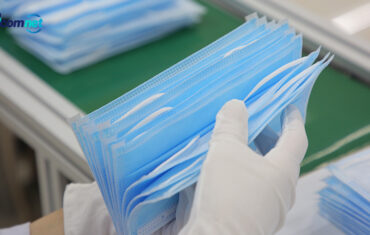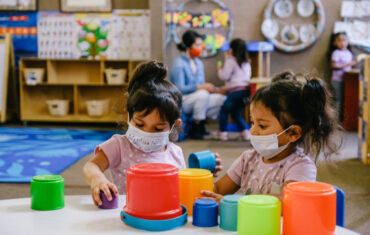Who should wear medical face masks?
Healthcare workers should use face masks to protect themselves when taking care of patients suspected of having COVID-19, according to the CDC. People with symptoms such as a fever, a cough, and shortness of breath, should also wear a mask when they are around others, to limit the spread of infection, the CDC says.
But in some instances, especially during certain hospital procedures, the virus may be able to float in smaller particles in the air, a process known as aerosol transmission. For the rest of us, medical face masks are not necessary, the CDC reiterates in its guidance. The supply of medical face masks and N95s, which are both meant to be used by healthcare workers for one patient and then thrown away, continues to be severely strained.
But some countries have advised broader mask use. In China, for example, authorities advise that people wear face masks in public places and on public transportation. In Hong Kong authorities have recommended wearing these when taking public transportation and in crowded areas.
What about homemade masks?
When it comes to the evidence on the kinds of face masks the CDC is now recommending, effectiveness is mixed. While some experts say wearing a homemade or purchased mask may help you remember not to touch your face, others note that they can be uncomfortable, leading wearers to adjust them often.
How to wear a mask properly?
People should use a face mask when out in public. The surgeon general said that people should wash their hands before donning face masks, and avoid touching their faces while wearing one. You’ll also need to avoid touching your eyes, nose, and mouth while removing your face covering and to wash your hands right away afterward. People hand or machine wash cloth face coverings once a day, and wear them again only once they’re completely dry.
If you wear a disposable mask, such as medical face masks, it’s essential to follow proper safety steps. Wash your hands before putting the mask on, then try not to touch the mask. To remove it, handle the elastic around your ears, not the front of the mask. Then, throw it away immediately and wash your hands again. Don’t reuse the mask.
Best steps for prevention
Along with wearing face masks when it’s appropriate, everyone should take the following steps to help prevent the spread of the coronavirus and other infections.
- Practice social distancing. Stay home as much as possible, and when you do have to go out, avoid crowds and keep 6 feet between yourself and others.
- Wash hands frequently, scrubbing thoroughly for the recommended 20 seconds.
- Use hand sanitizer when you can’t get to a sink—after touching a hard surface.
- Abstaining from touching your face is also important because that’s how germs get transferred from your hands to your mouth or nose, and enter your body.
- Cover any coughs or sneezes with a tissue






